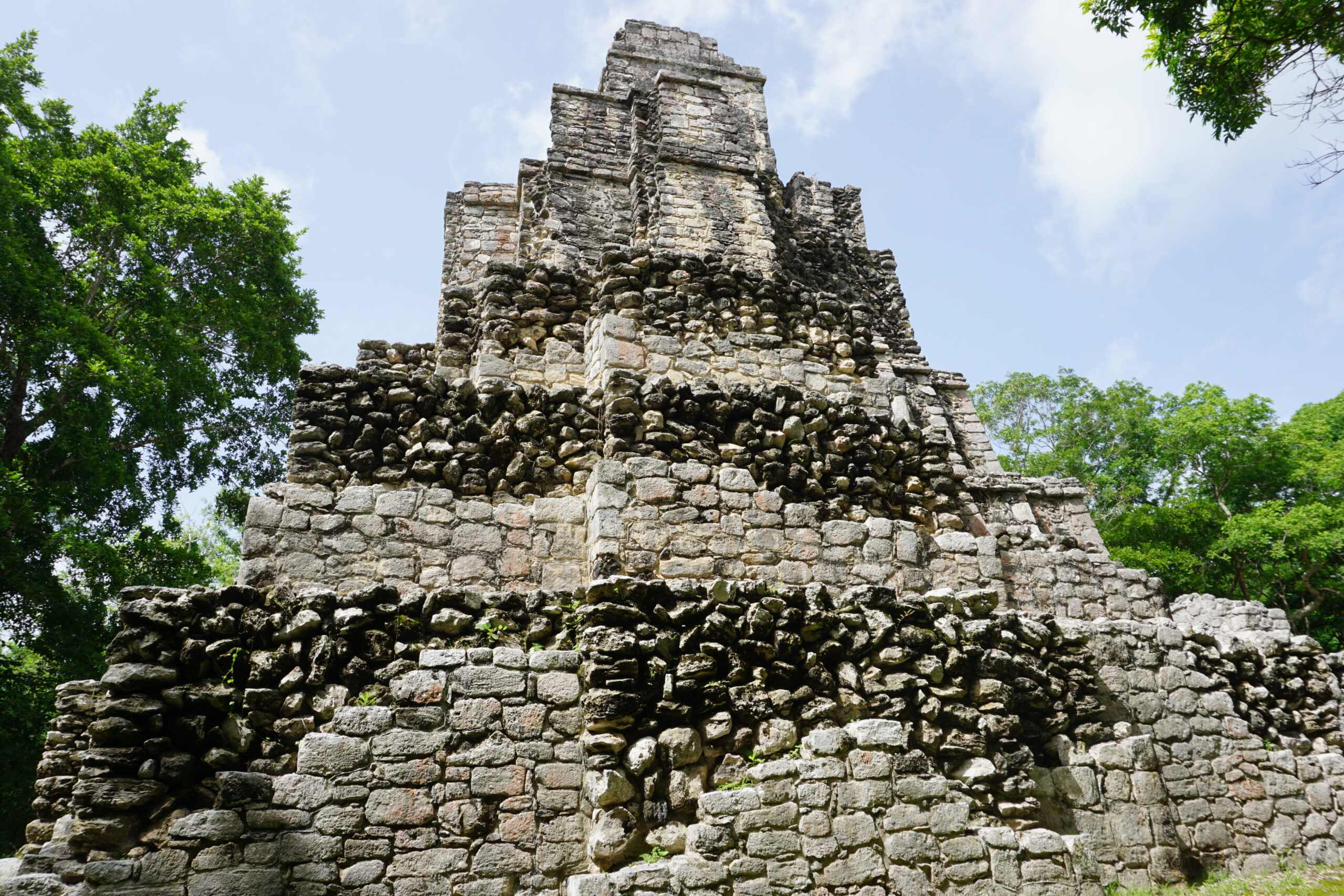Mexico is my favorite destination. Since 2001, I had gone to the Yucatan Peninsula 6 times, and 2020 marked my 7th visit. The more I go, the more inspired I get with Mayan culture and traditions, and the endless places that can be visited there.
I usually get around by doing tours form the resort. This time, I went for a different experience by hiring a private guide. If you’re looking for a private guide, I would definitely recommend JRam Riviera Maya tours.
The best thing I liked was the fact that I had the guide’s undivided attention and could ask as many questions as I could. I enjoy learning the history and traditions, so I could ask as many questions as I wanted to the point that I understood everything perfectly. Now I will share everything I learned.
Table of Contents
Puerto Aventuras – a local town where I had a traditional breakfast
Everyone who goes to the resorts enjoys a typical North American breakfast. I love going to the omlette station at the resort and getting a customized omlette with vegetables and ham. This time, I went out of my comfort zone and told the tour guide I wanted to try the Mexican breakfast. We stopped at a food truck, which served tacos around 8:30-9:00 am. Who thought someone would eat tacos for breakfast? That’s common in Mexico.
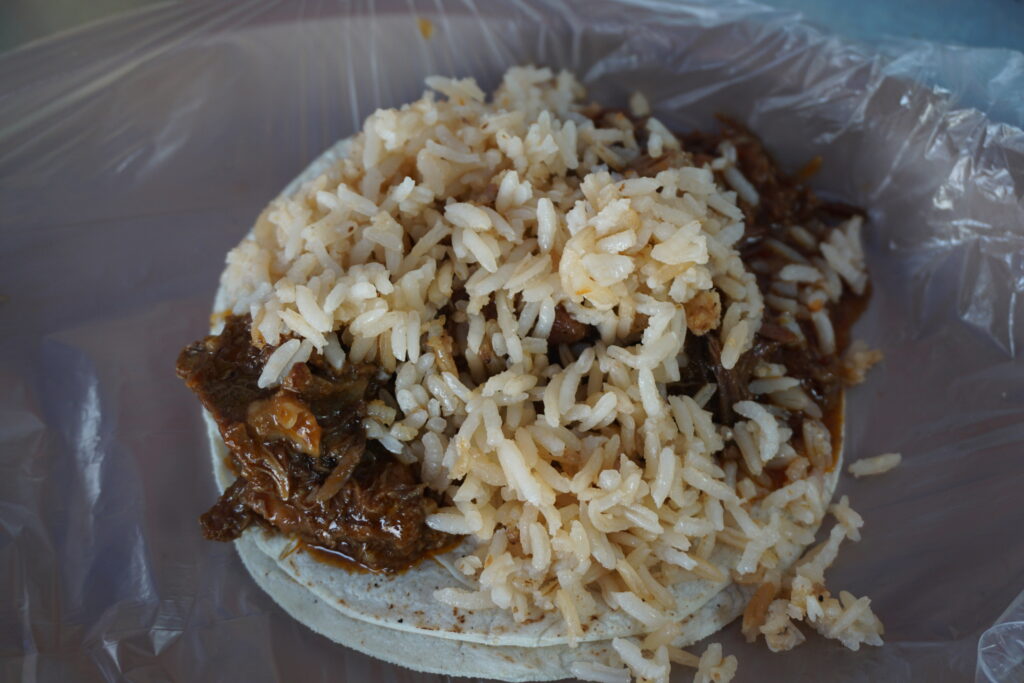
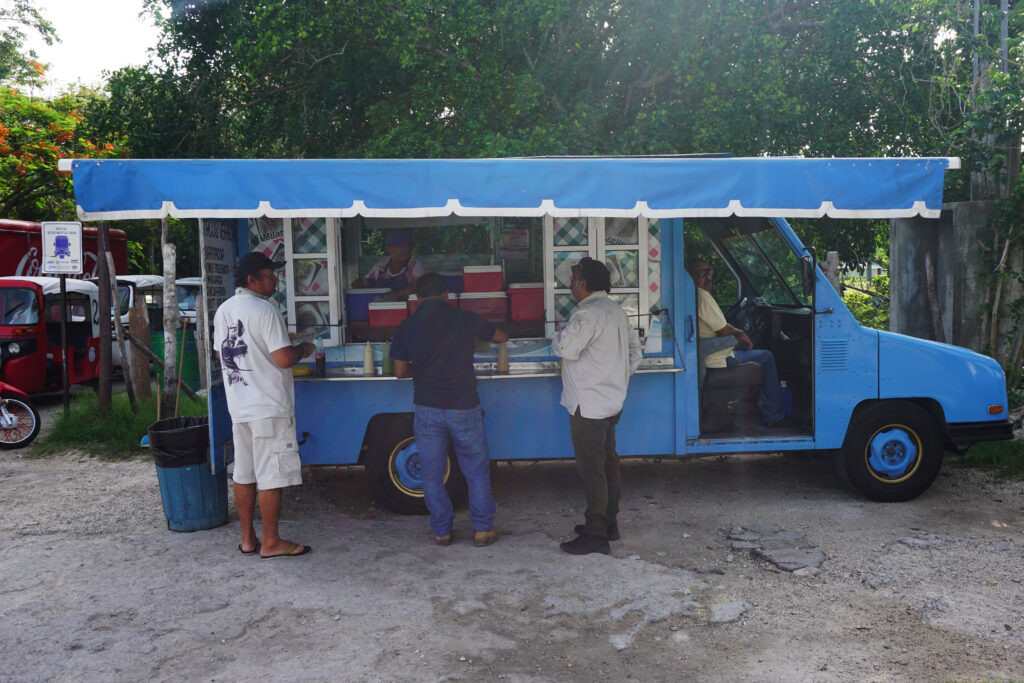
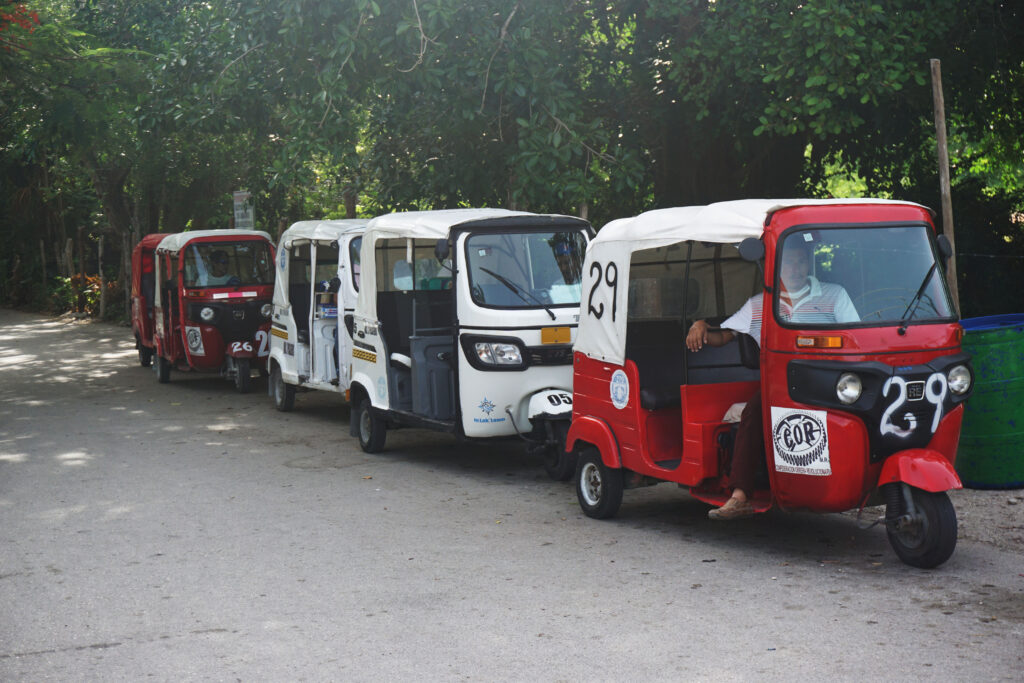
These Tuk Tuks made me feel like I was in Thailand. It turns out even in Mexico you will see Tuk Tuks. I had never seen these because the tour companies don’t stop in small local towns like Puerto Aventuras.
Sian Ka’An area
About 15 km north of Tulum is the Sian Ka’An area, where people don’t speak much Spanish. They understand it, however, a lot of them speak mostly the native language, which is Mayan. And even though it’s slowly changing and more settlements and businesses are being built. The people who live in the village are all Mayan speakers. They’re very sensitive people, but in a good way. They’re sensitive about everything like changes, globalization and technology. They’re not as open as other people in the world to embrace these changes. The younger people already have cell phones, but there’s no signal in most of those areas. And no internet. Meanwhile in Playa del Carmen, a city with a population around 500,000 people, everyone has today’s technology.
The Mayan villages are known as “Virgin Places“. It sounds like a funny name, so I asked why do they call it that word. A “Virgin Place” is a place where it’s all nature and a small Mayan Village with no big buildings. Also no hotels, phone signal or internet. They are called “virgin” because the Mayans want to preserve their lifestyle. When someone builds a hotel or high-rise building, it is considered that they “broke the natural habitat”. In other words, the message is “do not break the virginity! Preserve the lifestyle!”
Ruins of Muyil
Muyil is known as “Place of the Rabbit”. The name corresponds to two lagoons in the region. The ancient Mayan city of Muyil is located 12 km away from the Caribbean Sea. It is the most important of more than 20 prehispanic settlements located within the Sian Ka’An Biosphere Reserve.
The site covers almost 40 hectares that contain numerous ceremonial, administrative and residential buildings that were once occupied by a great prehispanic population whose origins date back to 300 BC.
Towards 250 AD, Muyil became an important city. Basal platforms and temples were constructed. At the time of the arrival of the first Spanish conquerors to the region, Muyil was inhabited, but it became rapidly depopulated during the first part of the 16th century.
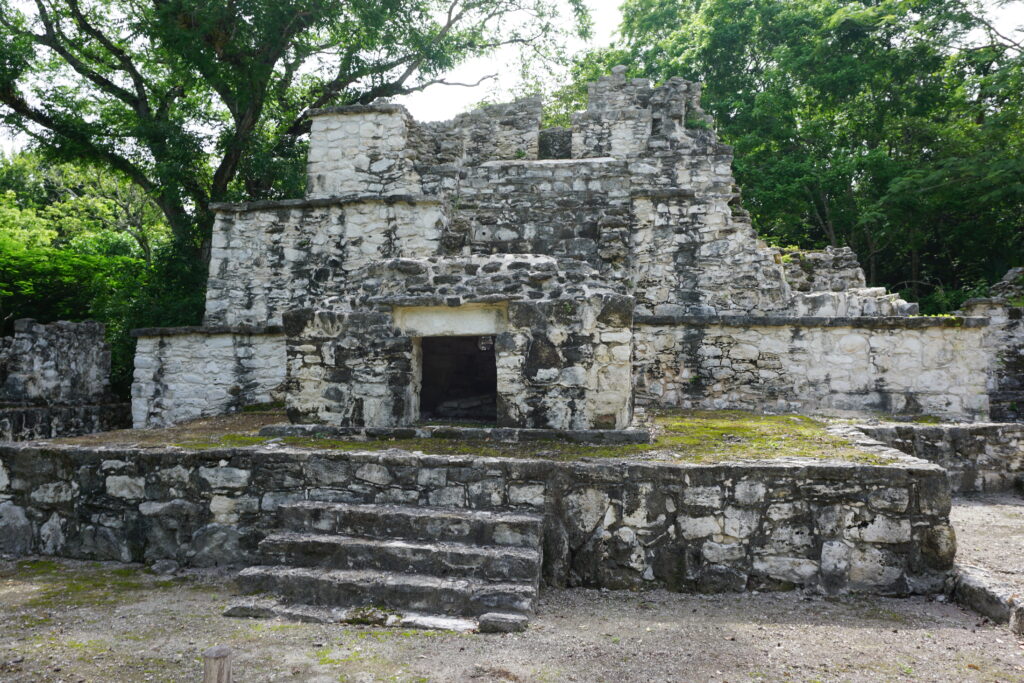
This is considered to be the oldest part of the former city of Muyil. They say this was built around 680.
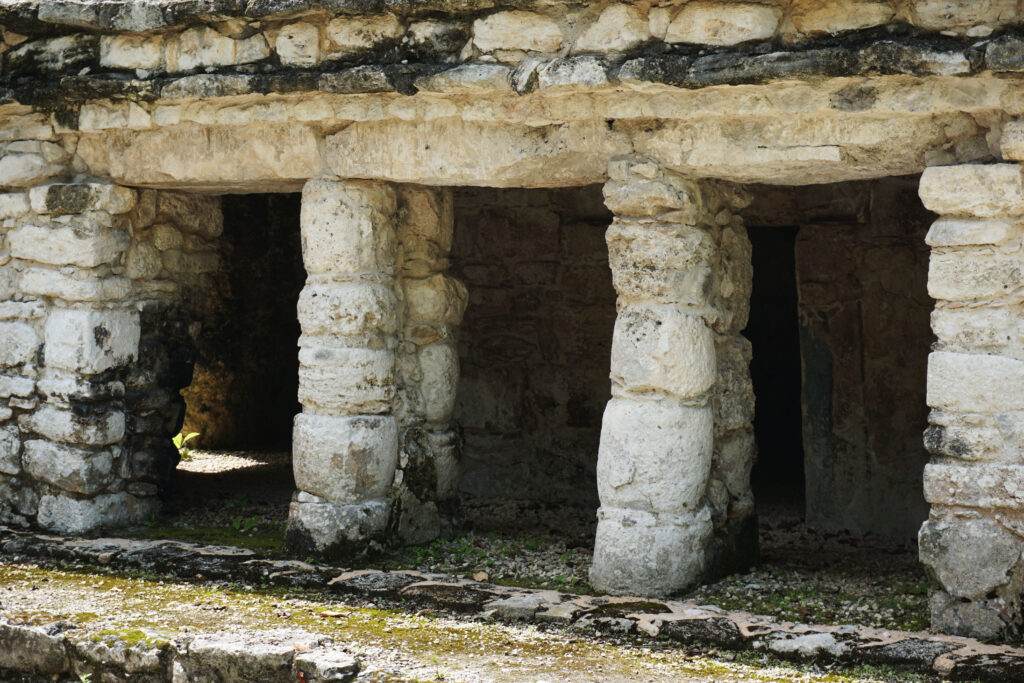
Those are the doorways to the temple. The average height of the Mayan people back then was 4.5 feet. Inside the small temple there are remains of original paintings from the 6th century. You can look through the door on the right and see some of the old blue paint.
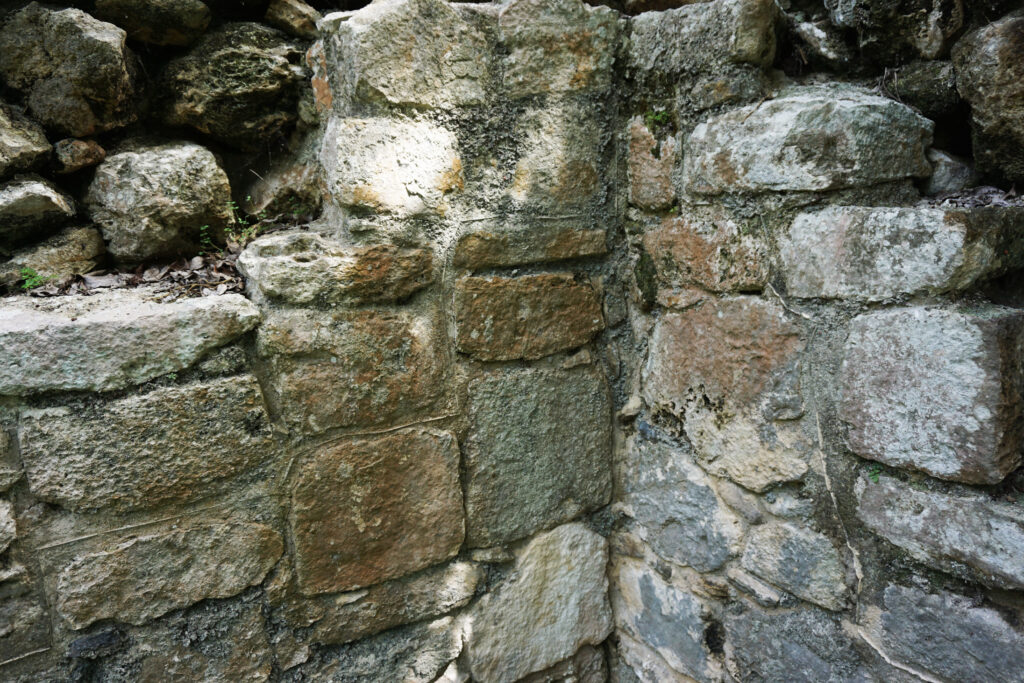
The red color that is seen is 800-year old paint. Originally, the walls were plastered and then painted in either bright red or turquoise blue. This is the original paint, which dates back to the 12th century AD. It lasts much longer than Sherwin Williams.
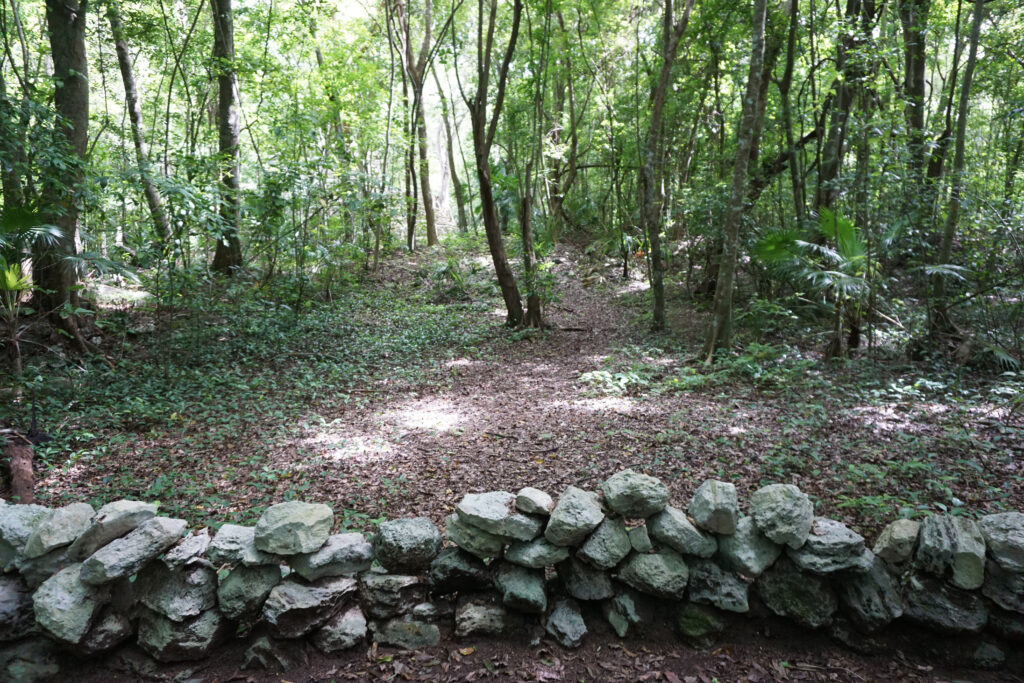
This is the remains of original stone fences, built by the Mayan rebels during the war against the Mexican government. The purpose of it was to protect themselves, because this area and Tulum were used as fortresses during the war. This is where they had shelter. After a battle they needed a place to shelter, so they’d stay inside the fenced area. Originally, they were much higher.
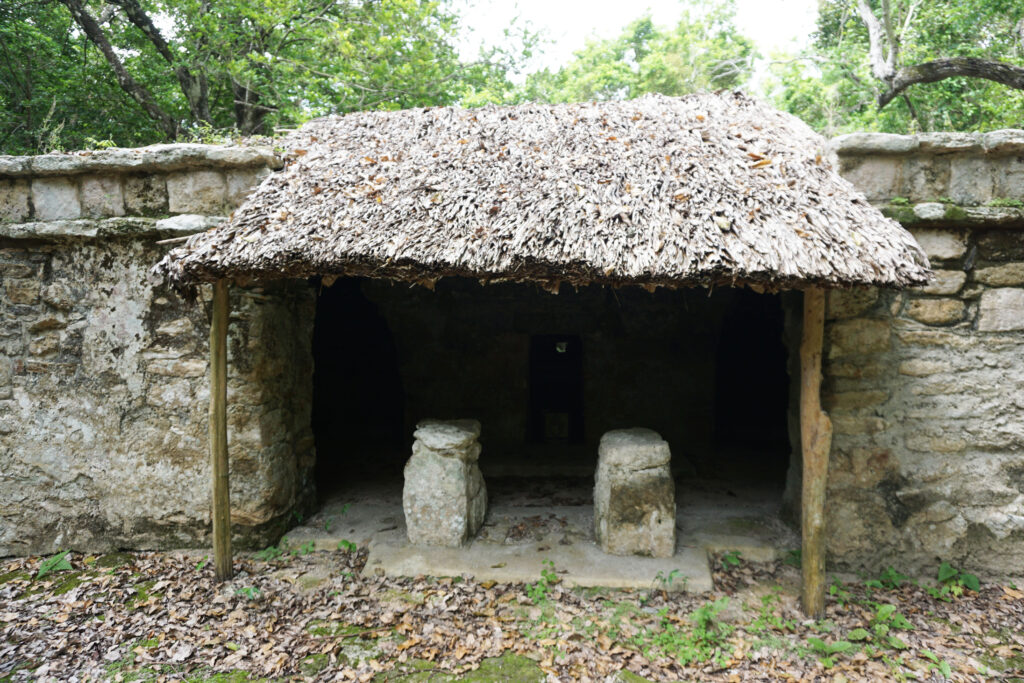
Each of the shrines on temples like this was dedicated to a specific purpose. Each and every one of these Mayan settlements followed the advice of only 1 man: the high priest. He was the only one able to connect with the gods, so his personal shrine was through that tiny doorway. He would be sitting inside receiving the energy of the gods. Whoever wanted to talk to him had to bow and bend down to their priest if they wanted to talk to him. In other words, they made it small on purpose, so that the people would never look straight at the eyes of the priest.
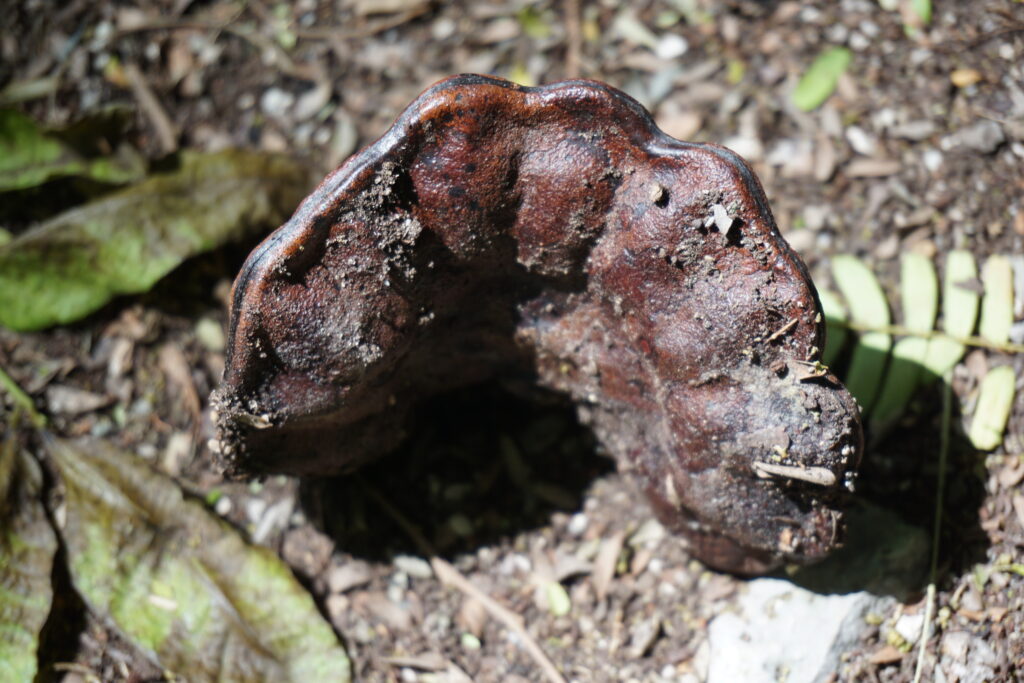
There were a lot of these on the ground. They are called Monkey Ears. I got scared thinking they are actual ears! There were many in the area, so what happened to all the monkeys? That is wrong! It’s a fruit that grows on trees! This one is old and dirty, but when it’s fresh you can eat it. They even feed horses with this fruit. Not only in Mexico, but this money ear is imported to Spain and Italy, and they feed their horses over there with that. It’s a fruit but has a chocolate taste to it.
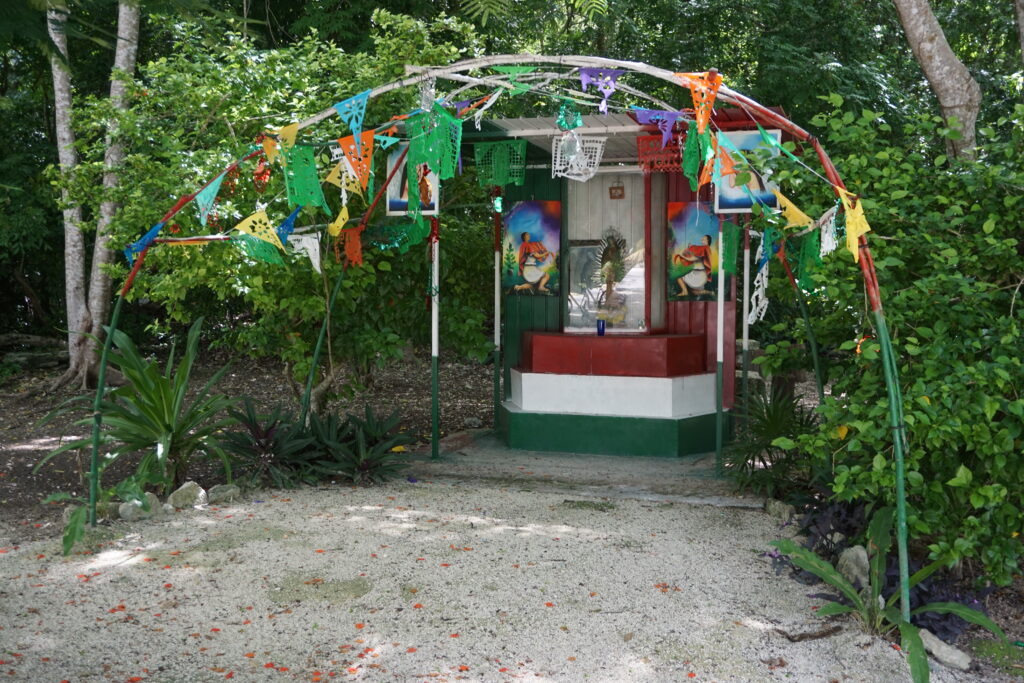
The Altar: a perfect comparison between the past and present of Mexico. What we saw in the ruins belongs to the past, but this is Mexico’s religious present. 90% of the people in the country honor and worship the Lady of Guadeloupe. The 12th of December is the day they voted and dedicated to her. Pilgrims would come from the nearby villages, bringing food, clothing or anything. And every year there’s a family that makes sure that the altar is clean.
Muyil Lagoon
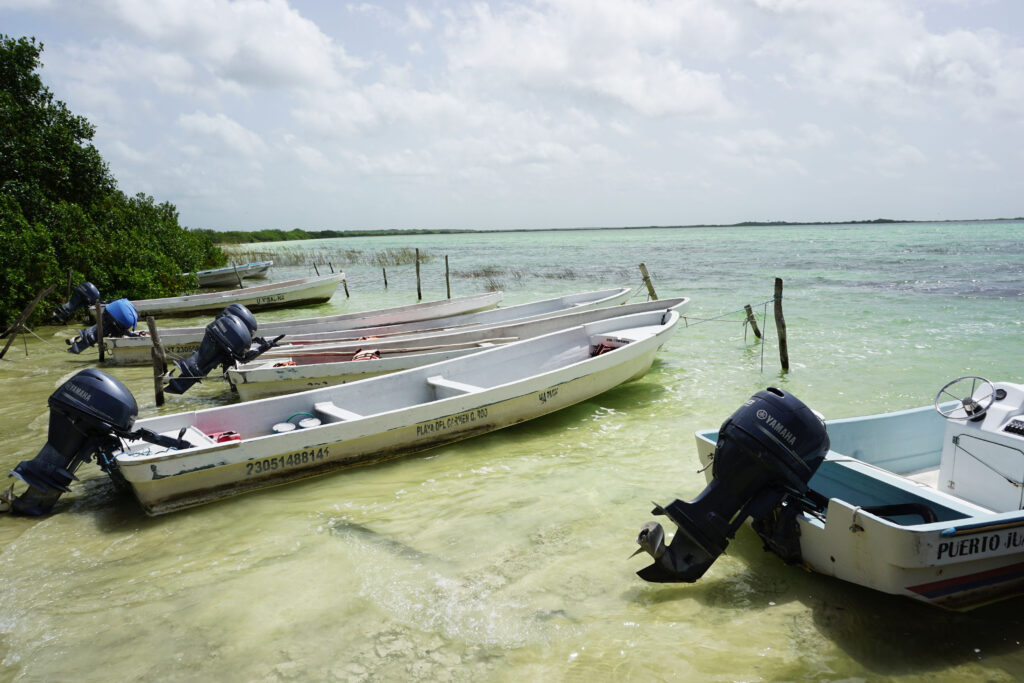
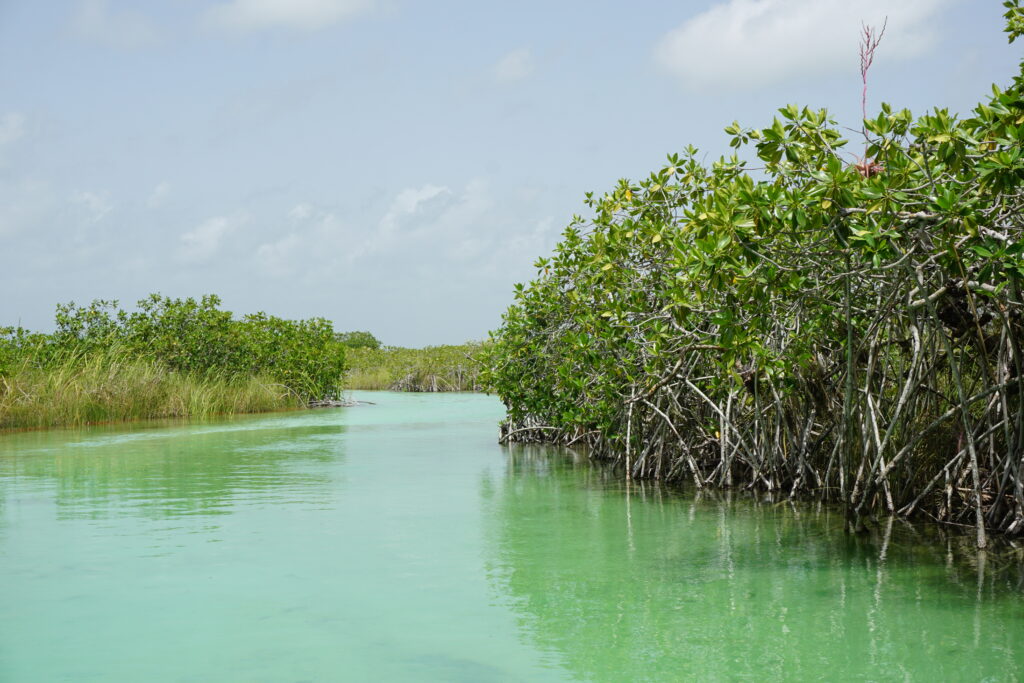
The Muyil Lagoon is natural, and has man-made canals. The Mayan people built canals so they could get to the open seas.
Cenotes
The Yucatan Peninsula has over 6000 cenotes. Many the tours offered by tour operators take you to different cenotes for an opportunity to swim. I told the tour guide I wanted to see some hidden cenotes. The cenote I visited was called Cenote Tortuga (translated as “Turtle Cenote”).
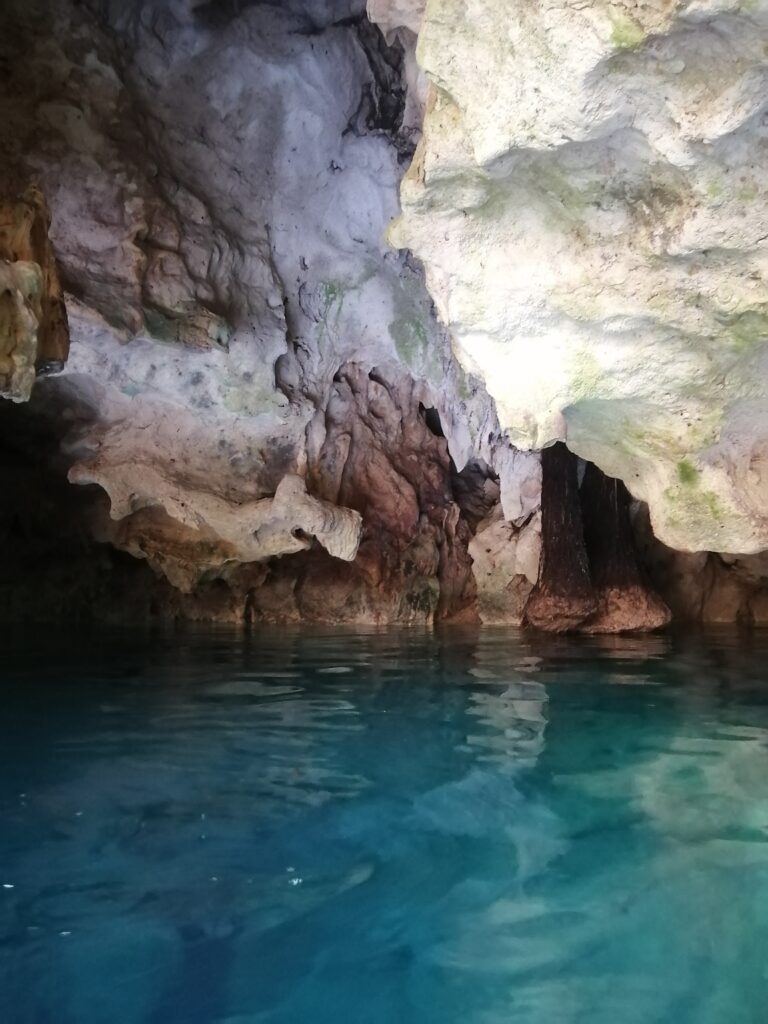
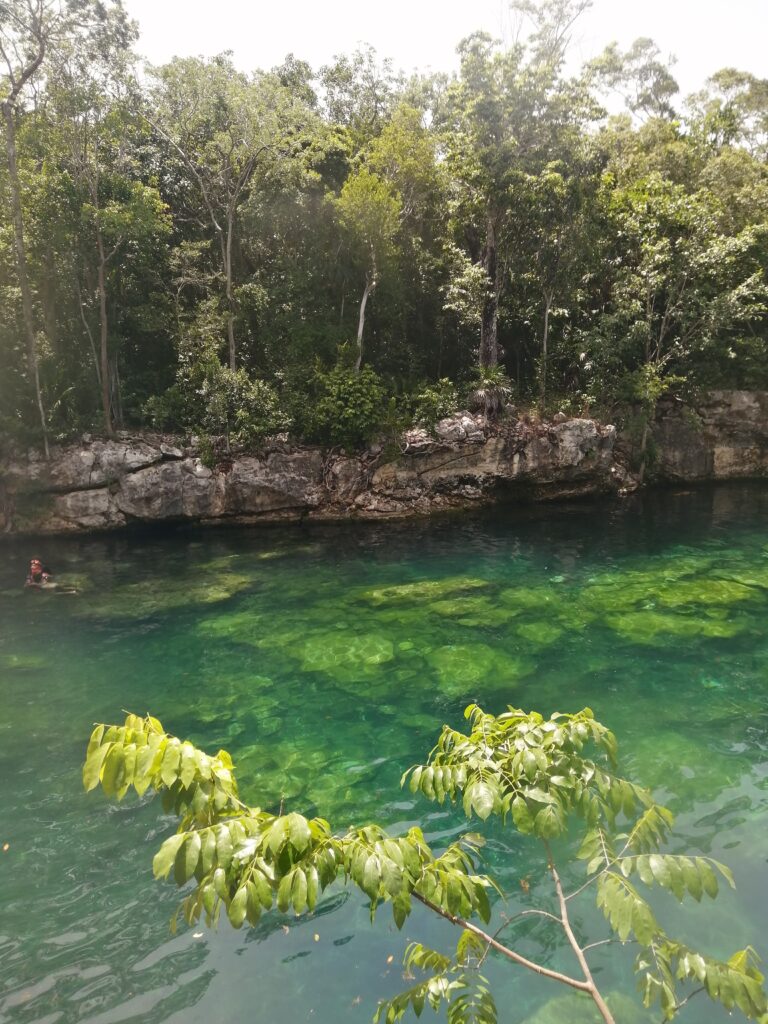
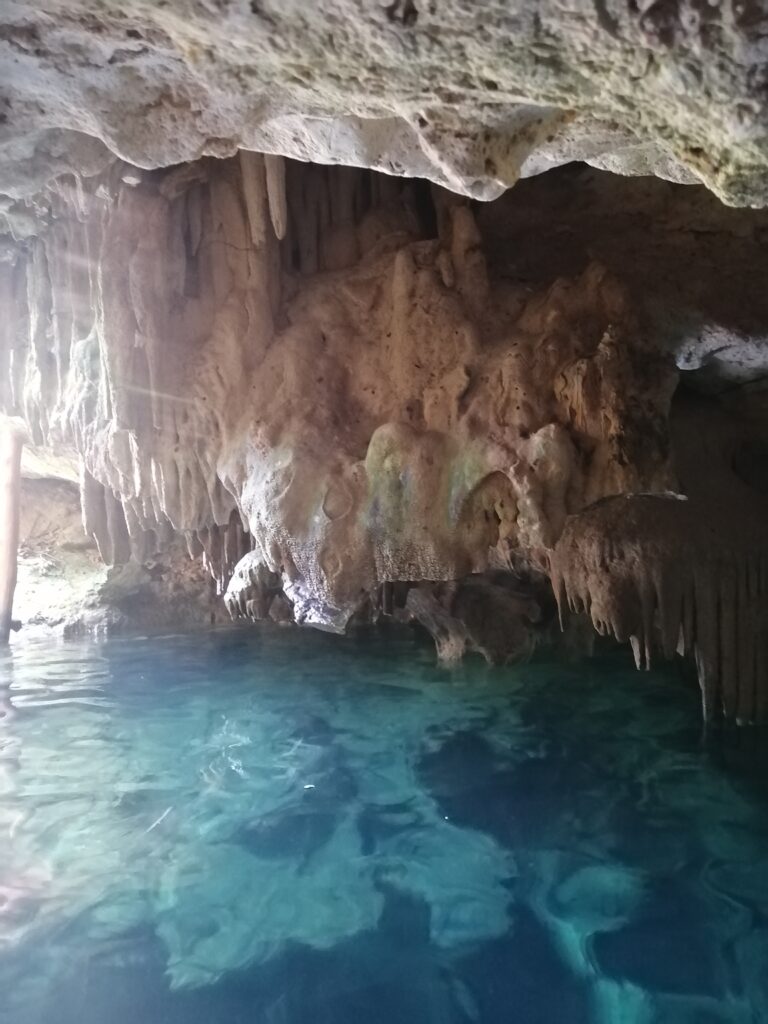
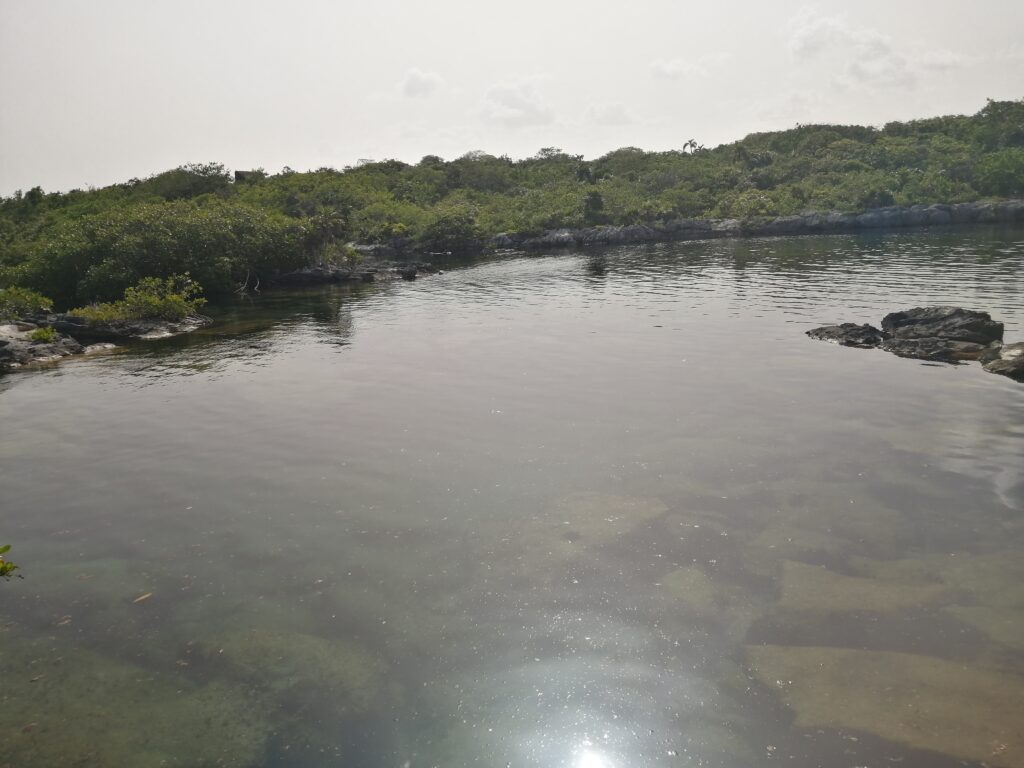
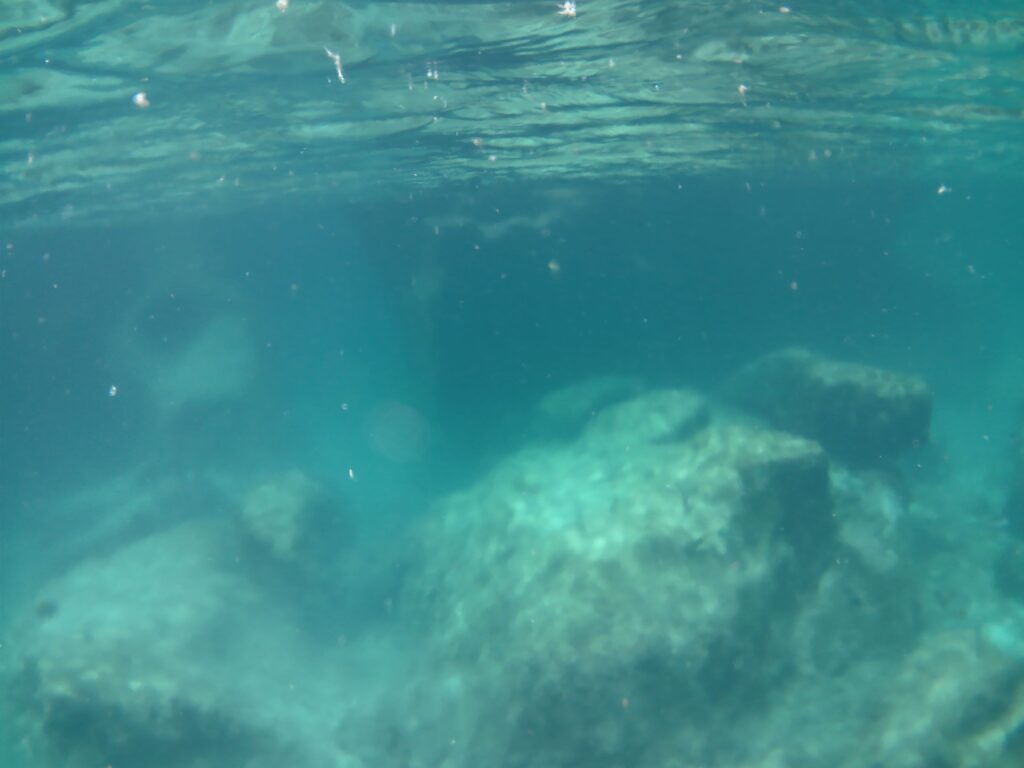
What is a cenote and how is it formed? Click here to see my article on cenotes.
Mexican Dinner
What better way to end a day than have a local meal at a Mexican restaurant rather than at the resort? Here is some of the foods I tried:
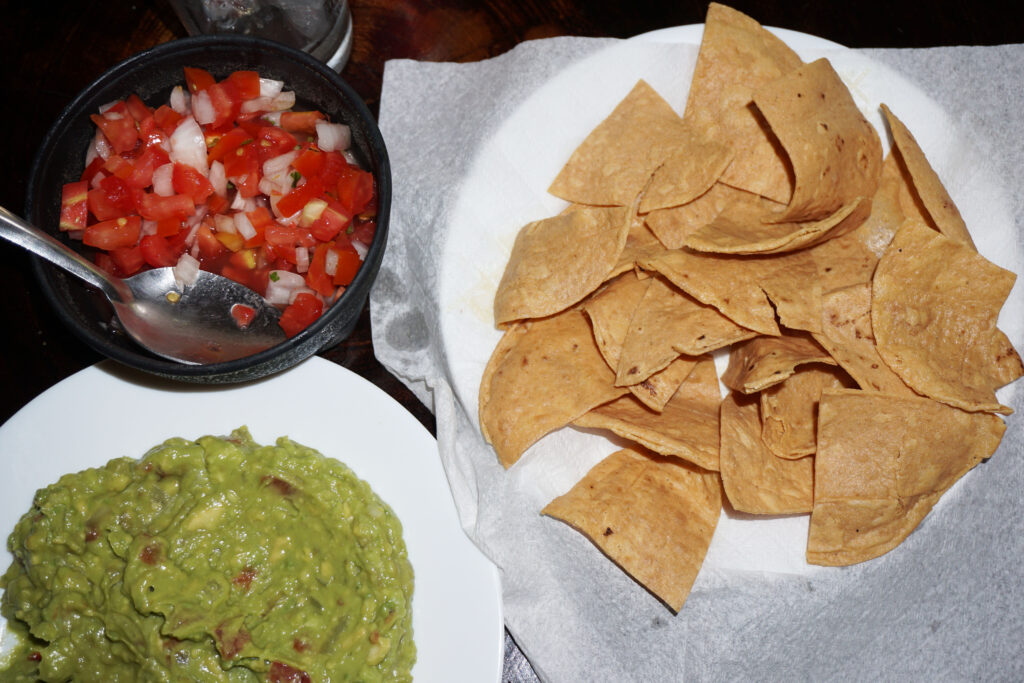
Every Mexican restaurant will serve you complimentary chips with salsa and guacamole as an appetizer. It’s the way how in Canada, a restaurant would give you bread to start. I can never get enough of the salsa in Mexico.
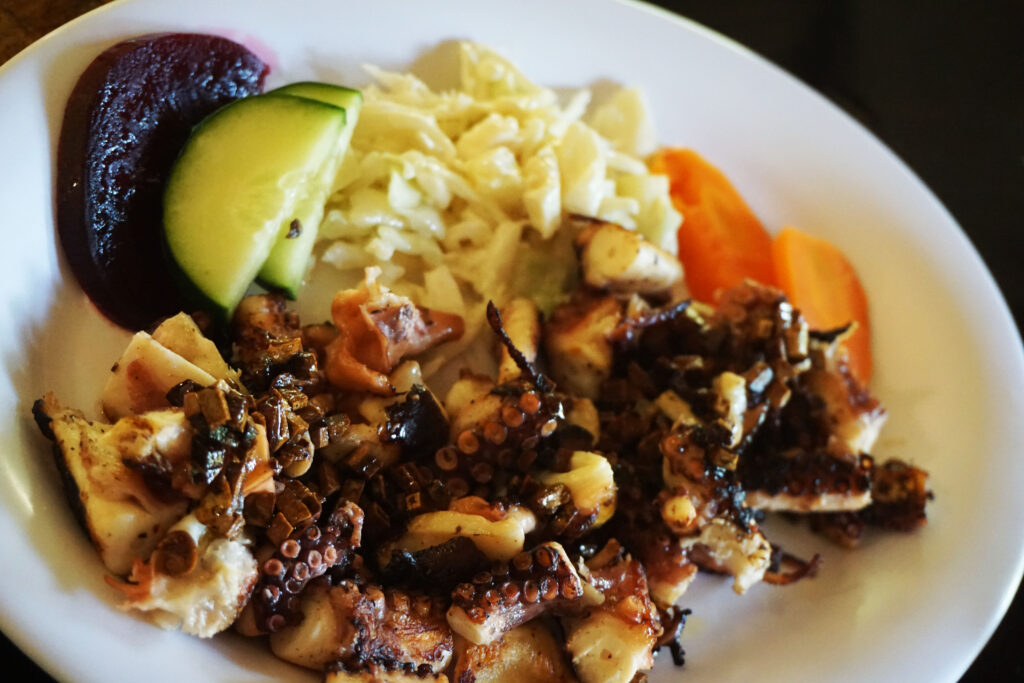
Octopus with vegetables. Although it doesn’t look tasty, I’ve learned not to judge food by its cover. The octopus was “slimy, yet satisfying”.
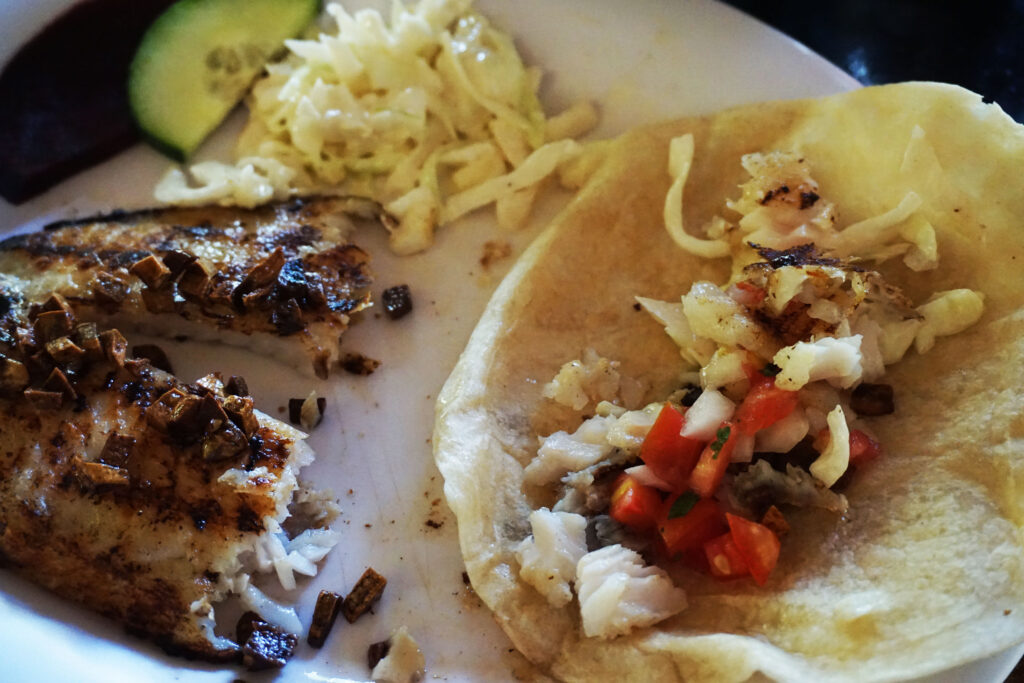
Fish with vegetables, eaten as a taco. Although the meal comes with tortillas on the side, the locals enjoy eating them as tacos. As can be seen, the fish can be broken down and put together with the other condiments to form a taco.
Story of the Quintana Roo province
Quintana Roo wasn’t originally part of Mexico. The area from Cancun to the Belize border was a protected territory by the federal government of Mexico, just like Puerto Rico is part of USA. But it wasn’t one of the states of the Republic of Mexico. It was just a territory with no benefits from the government. It was pretty much no-man’s land. The Cancun-Tulum highway didn’t exist. Electricity and a communications tower didn’t exist. And people didn’t have Mexican nationality until 1974. They didn’t have ID or a birth certificate. Until then, the area didn’t have much authorities by the Mexican government until it became the 31st state of the Mexican republic in 1974. Then they started building up Cancun, then the resorts, and then tourism started.
Even today, the schools outside the big cities teach their lessons in Mayan language.
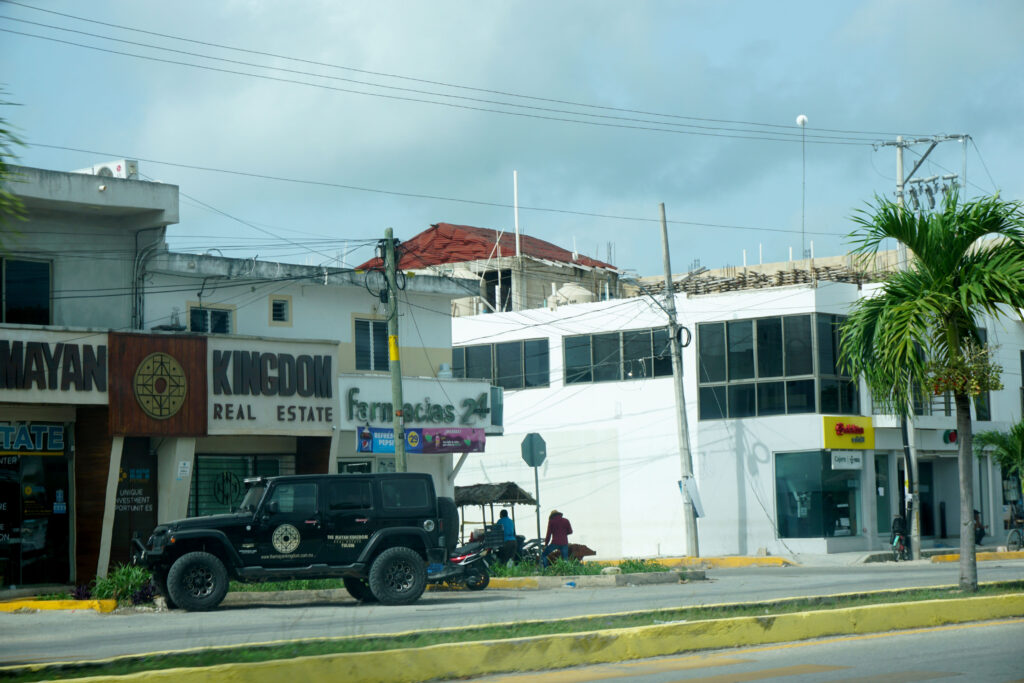
The very last independent community on the American continent was Tulum. Today, Tulum is nothing like it was 25 years ago. The shops, restaurants and bars that you see on the main avenue did not exist 25 years ago. Back in 1974, there was only a few hundred people living in Tulum. And they accepted that there were no laws for anyone. The Mayan people of Tulum had their own laws until 1974, when they became part of the Mexican republic.
Until the 1920s, if you came to Tulum and you didn’t look like a Mayan nor did you speak the Mayan language, you were doomed. The moment that the local people would recognize you as a foreigner, your life would be in danger. Why is that? The people of this land were involved in a 53-year war between 1847-1900. The war was between the Mayan rebels who were not happy with the system. They were not considered Mexicans until 1974 when Quintana Roo became a state. Back then, the Mayan people that lived in Tulum and the suburbs were very disappointed when they found out that everyone else in the country was receiving benefits from the government and they were not, so they felt left out. They kept asking for support, and nobody answered. Eventually they started fighting and said they didn’t want to be Mexicans anymore – this is how the war began. It was Mayan rebels versus anybody else. Anyone who didn’t look like a Mayan or speak the language was considered an enemy. And there was only 1 thing to save your life: if you said you were British and spoke English with their accent, they would spare you a life. The reason was, they were smuggling guns through Belize, which was a British colony back then, and very close to that area. But a lot of the first explorers that came here paid a very high price. Although the war was officially over in 1900, it continued for another 20-25 years. It was Mayan rebels versus anybody else.
Prior to the war, Mexico had become an independent country from Spain. After the war, when nobody won, the entire territory from Cancun to the Belize border was offered to England. The leaders of this revolution actually had a meeting with Queen Victoria and offered their territory in exchange for her protection. All of this could have been England if the queen had said yes. But she did not want to get involved in diplomatic situations, so it didn’t happen. This was after the war.
When the queen said no, how did it become Mexico? It remained as an independent territory. Mexico considered it a territory, but the people living in Quintana Roo would not consider themselves Mexicans. They were Mayans. They refused to learn Spanish and offer any directions, guidelines or orders from the Mexican government, and didn’t respect Mexican laws or the national anthem. So, they didn’t find the support of England, so they declared themselves independent – until 1974.
What makes Tulum different than other towns in Quintana Roo? It’s not on the beach, not even close – the beach is 5 km away. The archaeological site is on the beach, but not the town itself. They didn’t want to be on the beach because they had a bad experience with the Spanish the first time. Their town was founded away from the beach. Time has proved that it was the wrong decision, because the beach properties in Tulum are owned by foreigners, not by locals.

